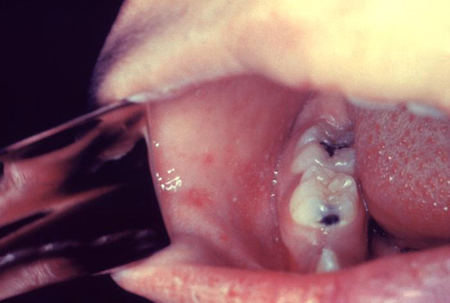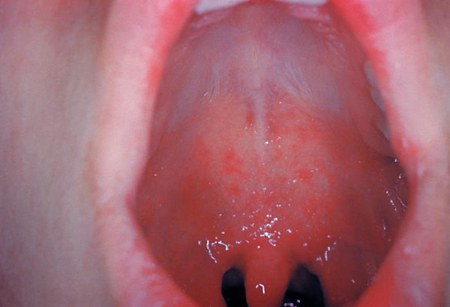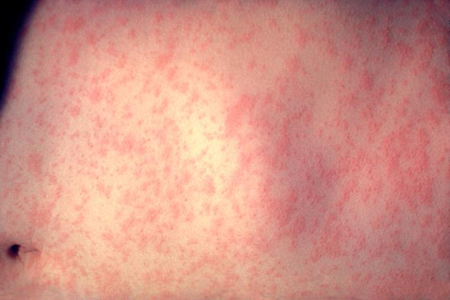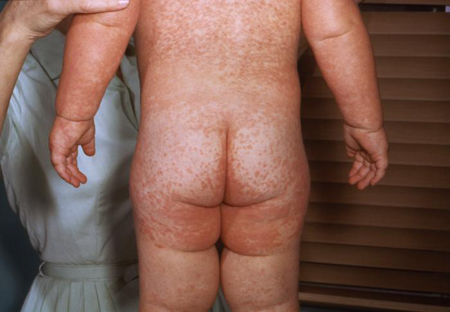History and exam
Key diagnostic factors
common
potential exposure to measles
Travel to measles-endemic area; exposure to individual with measles; attendance at high risk mass gathering/event.
unvaccinated/incompletely vaccinated individuals
Measles infection can be prevented by immunization with a live attenuated measles virus vaccine.[14] The World Health Organization recommends that more than 95% of the population receive two doses of measles-containing vaccine in order to maintain high levels of population immunity and eliminate measles.[2] Of those vaccinated, 95% are protected after a single dose and 99% protected after a 2-dose series.[3][13]
fever
Typical clinical feature. Abates soon after appearance of rash
cough
Typical prodromal symptom.
coryza
Acute inflammation of nasal mucous membrane, with discharge. Typical prodromal symptom.
conjunctivitis
Typical prodromal sign.
Koplik spots
Red spots often with a white central dot on erythematous buccal mucosa. Pathognomonic of measles infection. [Figure caption and citation for the preceding image starts]: Koplik spotsCenters for Disease Control and Prevention [Citation ends]. [Figure caption and citation for the preceding image starts]: Koplik spotsCenters for Disease Control and Prevention [Citation ends].
[Figure caption and citation for the preceding image starts]: Koplik spotsCenters for Disease Control and Prevention [Citation ends].
maculopapular rash
Rash beginning on the head and spreading to the trunk and extremities over a few days.
Resolution of fever soon after rash appearance. [Figure caption and citation for the preceding image starts]: Close-up view of the measles rash on day 3Centers for Disease Control and Prevention [Citation ends]. [Figure caption and citation for the preceding image starts]: Child with measles showing the characteristic red blotchy rash on his buttocks and back during the third day of the rashCenters for Disease Control and Prevention [Citation ends].
[Figure caption and citation for the preceding image starts]: Child with measles showing the characteristic red blotchy rash on his buttocks and back during the third day of the rashCenters for Disease Control and Prevention [Citation ends].
Risk factors
strong
exposure to measles virus
Measles virus is transmitted via person to person contact or via airborne spread of droplets. Measles is highly contagious, infecting 90% of exposed susceptible individuals, and can be transmitted from an infected person from four days before onset of rash to four days after.[3] Airborne transmission via aerosolized droplet nuclei in a closed space can occur up to two hours after the person with measles has left the space.[3]
no prior immunization against measles
Individuals who have not been immunized are at high risk of developing measles if exposed to the virus. This includes infants who are too young to receive measles-containing vaccine. Because measles is so highly contagious, outbreaks may occur in susceptible groups even when immunization rates are relatively high. The World Health Organization recommends that more than 95% of the population needs to receive two doses of measles-containing vaccine in order to maintain high levels of population immunity and eliminate measles.[2]
failure to respond to measles vaccine
Ninety-five percent of children immunized in the US at 12 months of age will develop immunity. After 2 doses of vaccine about 99% will be protected. Before the implementation of the 2-dose schedule, the number of children lacking protection after a single vaccine dose was sufficient to maintain transmission of measles.[13]
Use of this content is subject to our disclaimer
